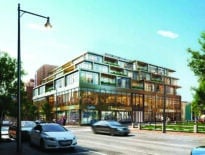
Rick Dimino
For nearly two months, the residents of Greater Boston have grappled with the inconveniences posed by the Sumner Tunnel shutdown, prompting them to explore alternative travel options. While the tunnel is set to reopen for weekday traffic in September, the experience has already yielded valuable insights into mode shift and the future of commuting in Greater Boston. So far, the Sumner Tunnel shutdown can be viewed as a success that may lay the groundwork for improving the region’s longstanding traffic challenges.
The comprehensive closure of the Sumner Tunnel was initiated to modernize this century-old piece of infrastructure and expedite the reconstruction timeline. Repairs began this past spring through weekend shutdowns, and the final phase will extend for another year. This ambitious undertaking ranks among the most formidable construction endeavors in recent memory. Although initial concerns centered on traffic congestion and accessibility concerns in East Boston, the project has impressively demonstrated it can help the region realize it has better transportation options.
MassDOT Secretary Gina Fiandaca, Highway Administrator Jonathan Gulliver and the entire Healey-Driscoll administration spearheaded the #DitchtheDrive public awareness campaign and deserve commendation for their management of the repairs and development of communication and mitigation strategies. This campaign not only explained the shutdown’s purpose, but it also promoted the unprecedented array of transportation alternatives developed to mitigate the impacts of the closure.
Transportation alternatives included free Blue Line trips, free and reduced-cost water ferry options, reduced rates on the Newburyport/Rockport commuter rail line, reduced parking at MBTA and commuter rail facilities, free bus service on select routes in Chelsea and Revere and additional options for travelers to and from Logan Airport.
Don’t Lose This Opportunity
Their outreach efforts clearly worked, with increased adoption of public transit, generally steady travel times for commuters on roads and normal operations at Logan Airport. Most notably, we did not see negative narratives about visiting Boston and we will continue to be a prime destination for travelers. This is as a testament to the effectiveness of the outreach campaign and the good work of the teams at MassDOT, the MBTA and Massport.
However, as the tunnel’s weekday reopening approaches, it would be unwise for the #DitchTheDrive campaign to pivot to the “Come Back to Your Car” campaign. Recent weeks have shown that both Bostonians and visitors are willing to explore alternative transportation modes. Ridership on the commuter rail and ferries surged, underscoring the potential for mass transit to persist as the primary solution for alleviating traffic congestion and efficiently moving people across the area. The crux of the matter lies in sustaining this positive momentum.
Ideally, those who turned to the Blue Line, commuter rail, buses or ferries during the shutdown will continue to embrace mass transit due to its tangible benefits. The sustained shift in transportation habits can accrue advantages for our transportation system, economy and environment alike.
Given the commonwealth’s aggressive targets for carbon emission reduction, encouraging commuters to opt for mass transit aligns naturally with curbing vehicular emissions and reducing the vehicular load on the congested roads of Eastern Massachusetts. The empirical insights and outreach from the #DitchTheDrive initiative should yield instructive data on effective strategies, while also paving the way for novel concepts to attract commuters. As autumn approaches, MassDOT, MBTA and Massport can contemplate fresh offerings and promotional efforts to counter the back-to-school and a hoped-for return-to-office commuter surge.
The commonwealth has invested substantial effort in managing the Sumner Tunnel shutdown, and this indicates a strong commitment to providing alternatives to driving. As we gaze into the horizon of transportation in Greater Boston, it is important to harness this momentum and the lessons gleaned from buses, trains, ferries, e-bikes and other mass transit services. This valuable knowledge can chart the course for future investment strategies and a comprehensive pricing framework for different facets of our transportation system.
Rick Dimino is president emeritus of A Better City




 |
| 

